首页 > SCI期刊 > SCIE期刊 > SSCI期刊 > 社会学 > 中科院2区 > JCRQ1 > 期刊介绍
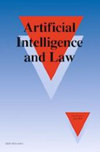
评价信息:
影响因子:3.1
年发文量:39
《人工智能与法律》(Artificial Intelligence And Law)是一本以Multiple综合研究为特色的国际期刊。该刊由SPRINGER出版商刊期4 issues per year。该刊已被国际重要权威数据库SCIE、SSCI收录。期刊聚焦Multiple领域的重点研究和前沿进展,及时刊载和报道该领域的研究成果,致力于成为该领域同行进行快速学术交流的信息窗口与平台。该刊2023年影响因子为3.1。CiteScore指数值为9.5。
Artificial Intelligence and Law is an international forum for the dissemination of original interdisciplinary research in the following areas: Theoretical or empirical studies in artificial intelligence (AI), cognitive psychology, jurisprudence, linguistics, or philosophy which address the development of formal or computational models of legal knowledge, reasoning, and decision making. In-depth studies of innovative artificial intelligence systems that are being used in the legal domain. Studies which address the legal, ethical and social implications of the field of Artificial Intelligence and Law.
Topics of interest include, but are not limited to, the following: Computational models of legal reasoning and decision making; judgmental reasoning, adversarial reasoning, case-based reasoning, deontic reasoning, and normative reasoning. Formal representation of legal knowledge: deontic notions, normative
modalities, rights, factors, values, rules. Jurisprudential theories of legal reasoning. Specialized logics for law. Psychological and linguistic studies concerning legal reasoning. Legal expert systems; statutory systems, legal practice systems, predictive systems, and normative systems. AI and law support for legislative drafting, judicial decision-making, and
public administration. Intelligent processing of legal documents; conceptual retrieval of cases and statutes, automatic text understanding, intelligent document assembly systems, hypertext, and semantic markup of legal documents. Intelligent processing of legal information on the World Wide Web, legal ontologies, automated intelligent legal agents, electronic legal institutions, computational models of legal texts. Ramifications for AI and Law in e-Commerce, automatic contracting and negotiation, digital rights management, and automated dispute resolution. Ramifications for AI and Law in e-governance, e-government, e-Democracy, and knowledge-based systems supporting public services, public dialogue and mediation. Intelligent computer-assisted instructional systems in law or ethics. Evaluation and auditing techniques for legal AI systems. Systemic problems in the construction and delivery of legal AI systems. Impact of AI on the law and legal institutions. Ethical issues concerning legal AI systems. In addition to original research contributions, the Journal will include a Book Review section, a series of Technology Reports describing existing and emerging products, applications and technologies, and a Research Notes section of occasional essays posing interesting and timely research challenges for the field of Artificial Intelligence and Law. Financial support for the Journal of Artificial Intelligence and Law is provided by the University of Pittsburgh School of Law.
人工智能与法律是一个国际论坛,旨在传播以下领域的原创跨学科研究:人工智能 (AI)、认知心理学、法学、语言学或哲学的理论或实证研究,旨在开发法律知识、推理和决策的形式或计算模型。深入研究法律领域正在使用的创新人工智能系统。研究人工智能与法律领域的法律、伦理和社会影响。
感兴趣的主题包括但不限于以下内容:法律推理和决策的计算模型;判断推理、对抗推理、基于案例的推理、道义推理和规范推理。法律知识的形式化表示:道义概念、规范
模态、权利、因素、价值观、规则。法律推理的法理理论。法律的专门逻辑。有关法律推理的心理学和语言学研究。法律专家系统;法定系统、法律实践系统、预测系统和规范系统。人工智能和法律支持立法起草、司法决策和公共管理。法律文件的智能处理;案例和法规的概念检索、自动文本理解、智能文档组装系统、超文本和法律文件的语义标记。万维网上法律信息的智能处理、法律本体、自动化智能法律代理、电子法律机构、法律文本的计算模型。人工智能和法律在电子商务、自动签约和谈判、数字版权管理和自动争议解决方面的影响。人工智能和法律在电子政务、电子政务、电子民主和支持公共服务、公共对话和调解的知识型系统方面的影响。法律或伦理方面的智能计算机辅助教学系统。法律人工智能系统的评估和审计技术。法律人工智能系统的构建和交付中的系统性问题。人工智能对法律和法律机构的影响。法律人工智能系统的伦理问题。除了原创研究贡献外,该期刊还将包括书评部分、一系列描述现有和新兴产品、应用和技术的技术报告,以及研究笔记部分,其中不定期发表论文,为人工智能和法律领域提出有趣且及时的研究挑战。匹兹堡大学法学院为《人工智能与法律期刊》提供资金支持。
《Artificial Intelligence And Law》(人工智能与法律)编辑部通讯方式为VAN GODEWIJCKSTRAAT 30, DORDRECHT, NETHERLANDS, 3311 GZ。如果您需要协助投稿或润稿服务,您可以咨询我们的客服老师。我们专注于期刊咨询服务十年,熟悉发表政策,可为您提供一对一投稿指导,避免您在投稿时频繁碰壁,节省您的宝贵时间,有效提升发表机率,确保SCI检索(检索不了全额退款)。我们视信誉为生命,多方面确保文章安全保密,在任何情况下都不会泄露您的个人信息或稿件内容。
2023年12月升级版
| 大类学科 | 分区 | 小类学科 | 分区 | Top期刊 | 综述期刊 |
| 社会学 | 2区 | LAW 法学 COMPUTER SCIENCE, ARTIFICIAL INTELLIGENCE 计算机:人工智能 COMPUTER SCIENCE, INTERDISCIPLINARY APPLICATIONS 计算机:跨学科应用 | 1区 2区 2区 | 否 | 否 |
2022年12月升级版
| 大类学科 | 分区 | 小类学科 | 分区 | Top期刊 | 综述期刊 |
| 计算机科学 | 2区 | LAW 法学 COMPUTER SCIENCE, ARTIFICIAL INTELLIGENCE 计算机:人工智能 COMPUTER SCIENCE, INTERDISCIPLINARY APPLICATIONS 计算机:跨学科应用 | 1区 2区 3区 | 否 | 否 |
2021年12月旧的升级版
| 大类学科 | 分区 | 小类学科 | 分区 | Top期刊 | 综述期刊 |
| 计算机科学 | 2区 | LAW 法学 COMPUTER SCIENCE, ARTIFICIAL INTELLIGENCE 计算机:人工智能 COMPUTER SCIENCE, INTERDISCIPLINARY APPLICATIONS 计算机:跨学科应用 | 1区 2区 3区 | 是 | 否 |
2021年12月基础版
| 大类学科 | 分区 | 小类学科 | 分区 | Top期刊 | 综述期刊 |
| 工程技术 | 3区 | COMPUTER SCIENCE, ARTIFICIAL INTELLIGENCE 计算机:人工智能 COMPUTER SCIENCE, INTERDISCIPLINARY APPLICATIONS 计算机:跨学科应用 | 4区 4区 | 否 | 否 |
2021年12月升级版
| 大类学科 | 分区 | 小类学科 | 分区 | Top期刊 | 综述期刊 |
| 计算机科学 | 2区 | LAW 法学 COMPUTER SCIENCE, ARTIFICIAL INTELLIGENCE 计算机:人工智能 COMPUTER SCIENCE, INTERDISCIPLINARY APPLICATIONS 计算机:跨学科应用 | 1区 2区 3区 | 是 | 否 |
基础版:即2019年12月17日,正式发布的《2019年中国科学院文献情报中心期刊分区表》;将JCR中所有期刊分为13个大类,期刊范围只有SCI期刊。
升级版:即2020年1月13日,正式发布的《2019年中国科学院文献情报中心期刊分区表升级版(试行)》,升级版采用了改进后的指标方法体系对基础版的延续和改进,影响因子不再是分区的唯一或者决定性因素,也没有了分区的IF阈值期刊由基础版的13个学科扩展至18个,科研评价将更加明确。期刊范围有SCI期刊、SSCI期刊。从2022年开始,分区表将只发布升级版结果,不再有基础版和升级版之分,基础版和升级版(试行)将过渡共存三年时间。
JCR分区等级:Q1
| 按JIF指标学科分区 | 收录子集 | 分区 | 排名 | 百分位 |
| 学科:COMPUTER SCIENCE, ARTIFICIAL INTELLIGENCE | SCIE | Q2 | 86 / 197 |
56.6% |
| 学科:COMPUTER SCIENCE, INTERDISCIPLINARY APPLICATIONS | SCIE | Q2 | 65 / 169 |
61.8% |
| 学科:LAW | SSCI | Q1 | 8 / 421 |
98.2% |
| 按JCI指标学科分区 | 收录子集 | 分区 | 排名 | 百分位 |
| 学科:COMPUTER SCIENCE, ARTIFICIAL INTELLIGENCE | SCIE | Q1 | 24 / 198 |
88.13% |
| 学科:COMPUTER SCIENCE, INTERDISCIPLINARY APPLICATIONS | SCIE | Q1 | 20 / 169 |
88.46% |
| 学科:LAW | SSCI | Q1 | 48 / 421 |
88.72% |
| Gold OA文章占比 | 研究类文章占比 | 文章自引率 |
| 40.82% | 97.44% | 0.26... |
| 开源占比 | 出版国人文章占比 | OA被引用占比 |
| 0.40... | -- | 0.39... |
名词解释:JCR分区在学术期刊评价、科研成果展示、科研方向引导以及学术交流与合作等方面都具有重要的价值。通过对期刊影响因子的精确计算和细致划分,JCR分区能够清晰地反映出不同期刊在同一学科领域内的相对位置,从而帮助科研人员准确识别出高质量的学术期刊。
| CiteScore | SJR | SNIP | CiteScore 指数 | ||||||||||||
| 9.5 | 1.501 | 3.467 |
|
名词解释:CiteScore是基于Scopus数据库的全新期刊评价体系。CiteScore 2021 的计算方式是期刊最近4年(含计算年度)的被引次数除以该期刊近四年发表的文献数。CiteScore基于全球最广泛的摘要和引文数据库Scopus,适用于所有连续出版物,而不仅仅是期刊。目前CiteScore 收录了超过 26000 种期刊,比获得影响因子的期刊多13000种。被各界人士认为是影响因子最有力的竞争对手。
历年中科院分区趋势图
历年IF值(影响因子)
2019-2021年国家/地区发文量统计
| 国家/地区 | 数量 |
| USA | 20 |
| Italy | 14 |
| Netherlands | 8 |
| England | 7 |
| France | 6 |
| Australia | 5 |
| Luxembourg | 5 |
| Belgium | 4 |
| Japan | 4 |
| Poland | 4 |
2019-2021年机构发文量统计
| 机构 | 数量 |
| UNIVERSITY OF BOLOGNA | 6 |
| UNIVERSITY OF GRONINGEN | 6 |
| COMMONWEALTH SCIENTIFIC & INDUSTRIAL RES... | 5 |
| EUROPEAN UNIVERSITY INSTITUTE | 5 |
| UNIVERSITY OF TURIN | 5 |
| CENTRE NATIONAL DE LA RECHERCHE SCIENTIF... | 4 |
| UNIVERSITY OF LUXEMBOURG | 4 |
| DARTMOUTH COLLEGE | 3 |
| JAPAN ADVANCED INSTITUTE OF SCIENCE & TE... | 3 |
| MITRE CORPORATION | 3 |
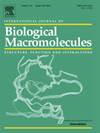
中科院分区:1区
影响因子:7.7
审稿周期:约Time to first decision: 9 days; Review time: 64 days; Submission to acceptance: 82 days; 约2.7个月 约7.8周
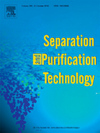
中科院分区:1区
影响因子:8.1
审稿周期:约Time to first decision: 6 days; Review time: 44 days; Submission to acceptance: 54 days; 约4.1个月 约6.8周
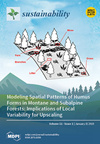
中科院分区:3区
影响因子:3.3
审稿周期:约17.72天 11 Weeks
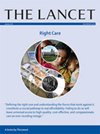
中科院分区:1区
影响因子:98.4
审稿周期: 约3月
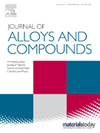
中科院分区:2区
影响因子:5.8
审稿周期: 约2.4个月 约7.6周

中科院分区:2区
影响因子:5.1
审稿周期: 约1.9个月 约2.7周
本站合法持有《出版物经营许可证》,仅销售经国家新闻出版署批准的合法期刊,不是任何杂志官网,不涉及出版事务。本站仅提供有限咨询服务,需要用户自己向出版商投稿且没有绿色通道,是否录用一切以出版商通知为准。提及的第三方名称或商标,其知识产权均属于相应的出版商或期刊,本站与上述机构无从属关系,所有引用均出于解释服务内容的考量,符合商标法规范。本页信息均由法务团队进行把关,若期刊信息有任何问题,请联系在线客服,我们会认真核实处理。 若用户需要出版服务,请联系出版商:VAN GODEWIJCKSTRAAT 30, DORDRECHT, NETHERLANDS, 3311 GZ。